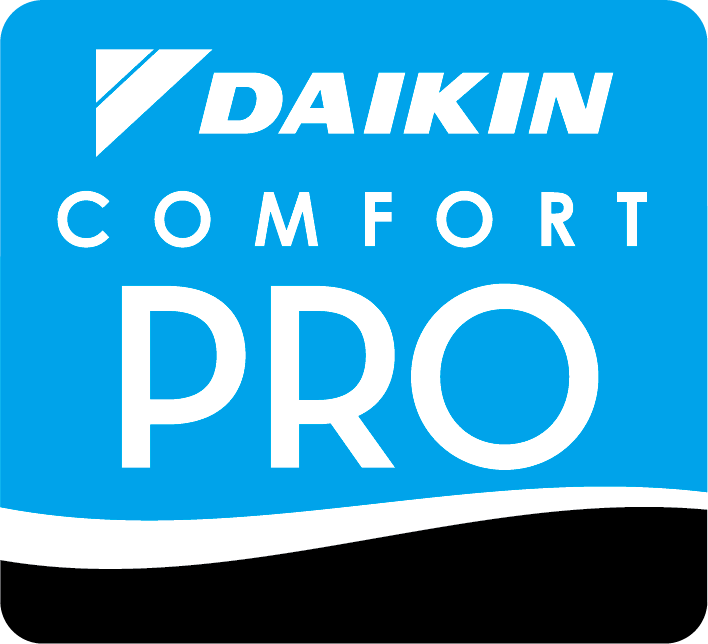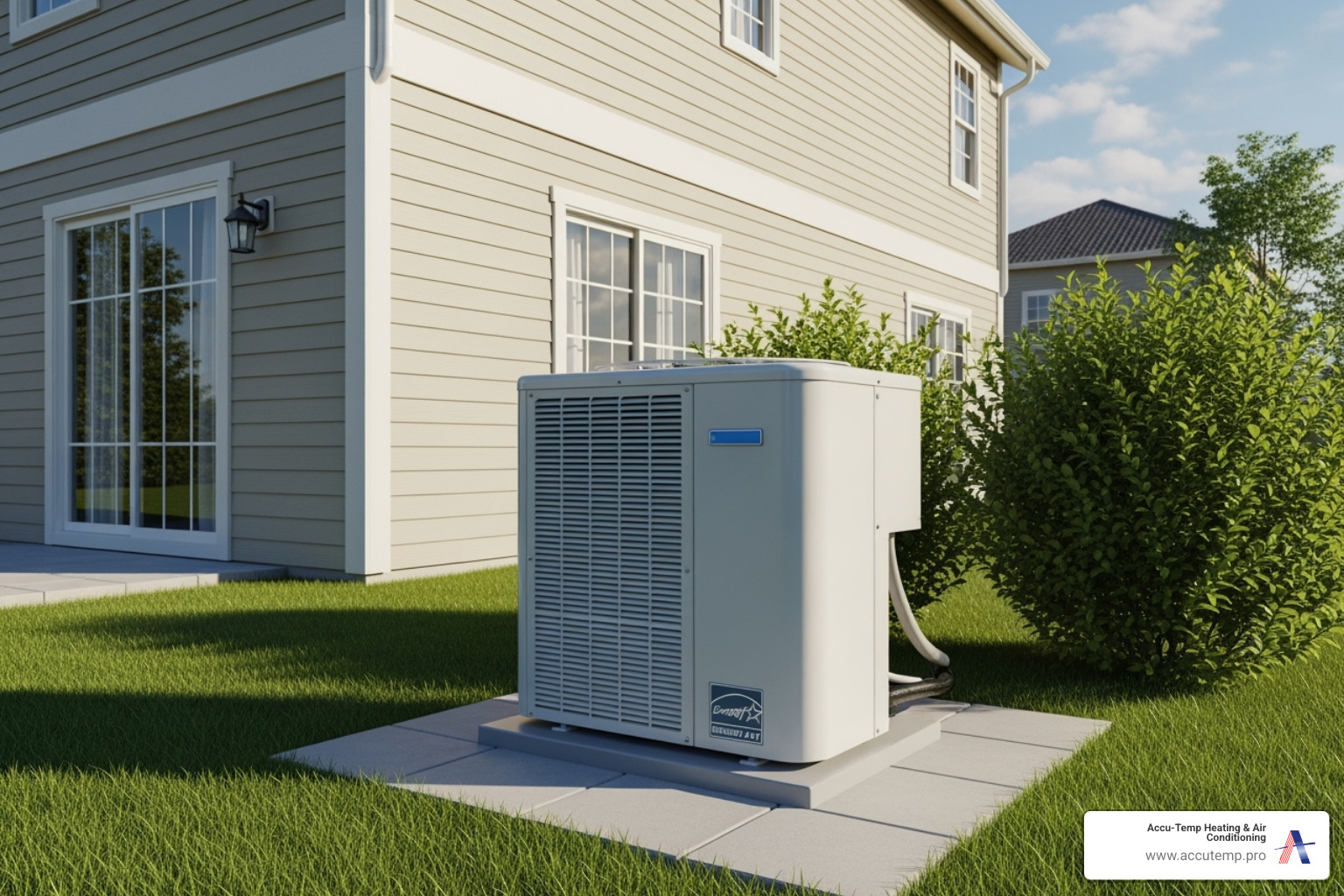Why HVAC Indoor Air Quality Matters More Than You Think
Your HVAC indoor air quality affects every breath you take in your Florida home. More than just a temperature controller, your heating and cooling system is your first line of defense against indoor air pollution, which can trigger allergies, worsen asthma, and cause headaches and fatigue.
Quick Ways to Improve HVAC Indoor Air Quality:
- Change air filters regularly, especially during peak usage.
- Upgrade to higher-rated MERV 8-13 filters.
- Schedule professional duct cleaning every 3-5 years.
- Install whole-home air purifiers for comprehensive filtration.
- Maintain humidity levels between 30-50%.
- Ensure adequate ventilation with exhaust fans.
According to the EPA, indoor air can be 2-5 times more polluted than outdoor air. Common culprits like dust, pet dander, mold spores, and bacteria circulate through your ductwork. When your HVAC system is neglected, it can become a breeding ground for these pollutants. The good news is that with the right approach, your system can be a powerful tool for creating cleaner, healthier air for your family.
Understanding Indoor Air Quality (IAQ) and Its Impact
Indoor Air Quality (IAQ) refers to the health and comfort of the air inside your home. When it’s poor, your home can become a source of health problems, especially in Florida’s humid climate which encourages mold growth. You might notice more frequent headaches, fatigue, or allergy symptoms that seem worse at home. These are signals that your indoor environment needs attention. For a deeper dive, see our articles on how poor indoor air quality impacts your health and the importance of air quality.
Key Pollutants and Symptoms
Invisible pollutants circulating through your HVAC system are often the cause of poor IAQ. Understanding them can help you take action.
- Volatile Organic Compounds (VOCs): Gases from paint, cleaning products, and new furniture that can cause headaches and nausea.
- Mold and Mildew: Thrives in Florida’s humidity, especially inside unseen ductwork, triggering allergies and respiratory issues.
- Dust and Pet Dander: A mix of skin cells, fibers, and outdoor particles that your HVAC system circulates unless properly filtered.
- Carbon Monoxide (CO): A colorless, odorless gas from fuel-burning appliances. Every home needs working CO detectors.
- Bacteria and Viruses: Can travel and multiply within your HVAC system, leading to more frequent illnesses.
If you experience persistent headaches, unusual fatigue, or allergy and asthma symptoms that worsen at home, your indoor air is the likely culprit. Don’t wait for symptoms to become severe. If allergies are a concern, start with our tips to Improve IAQ During Allergy Season. You can also find strategies for dealing with common issues in our guide to Combating Indoor Air Pollutants.
The Three Core Strategies for Cleaner Indoor Air
To improve your HVAC indoor air quality, we recommend three proven strategies, ranked by effectiveness: source control, ventilation, and air cleaning. Using them together provides the best results. You can learn more in our comprehensive guide on How to Improve Your Indoor Air Quality.
Strategy 1: Source Control
The most effective approach is to stop pollutants at their source. This is often the least expensive and most immediate solution.
- Reduce Emissions: Choose low-VOC paints and products. Ensure gas appliances are well-maintained.
- Store Chemicals Properly: Keep paints, solvents, and cleaning supplies in well-ventilated areas, away from living spaces.
- Control Moisture: Fix leaks promptly and clean up spills to prevent mold growth, a major issue in Florida. While houseplants are nice, avoid overwatering, as explained in our guide to the Best Air Purifying Plants.
Strategy 2: Improving Ventilation
Good ventilation removes stale, polluted air and brings in fresh air, diluting contaminants.
- Natural Ventilation: Open windows and doors when outdoor air quality is good to create cross-ventilation.
- Mechanical Ventilation: Use exhaust fans in kitchens and bathrooms to remove pollutants and moisture at the source. Most standard HVAC systems recirculate indoor air, but advanced systems can bring in fresh, filtered air.
- Manage Airflow: Understand how air moves through your home, especially around your Air Vents & Poor Indoor Air Quality, to maximize these strategies.
Optimizing Your HVAC for Superior Indoor Air Quality
Your HVAC system is your home’s most powerful tool for managing HVAC indoor air quality. When properly maintained, it becomes a comprehensive solution that filters, circulates, and conditions the air your family breathes.
Think of your HVAC as your home’s respiratory system. It processes thousands of cubic feet of air daily, and its effectiveness relies on three key functions:
- Filtration: Removes particles and pollutants from the air.
- Humidity Control: Prevents mold growth and maintains comfort.
- Fresh Air Intake: Dilutes indoor pollutants with cleaner outdoor air (in advanced systems).
A well-maintained system not only improves air quality but also improves energy efficiency and reduces dust. The difference often lies in the details, like proper filter selection and regular service. Our guide on how HVAC Maintenance Improves Indoor Air Quality shows how routine care protects both your family’s health and your investment.
The Role of Filtration in HVAC Indoor Air Quality
Your HVAC air filter is the first line of defense against airborne particles. The effectiveness of a filter is measured by its MERV rating (Minimum Efficiency Reporting Value)—a higher number means it can capture smaller particles.
For most homes, MERV ratings between 8 and 13 provide the best balance of filtration and airflow. Filters with very high ratings (MERV 14+) are typically for specialized environments like hospitals and can strain a standard residential HVAC system.
- Standard Fiberglass Filters (MERV 1-4): Catch large particles like lint but do little for smaller allergens.
- Pleated Filters (MERV 5-13): Offer a significant upgrade, capturing finer particles like pollen, pet dander, and mold spores. A quality media air cleaner can be up to seven times more effective than a standard filter.
- HEPA Filters (MERV 17-20): The gold standard, removing over 99% of tiny particles. However, they are too restrictive for most home HVAC systems and are best used in standalone purifiers or specially designed whole-home systems.
| Filter Type | MERV Rating | Particle Capture Rate (Examples) | Considerations |
|---|---|---|---|
| Standard (Fiberglass) | 1-4 | Large dust, lint | Inexpensive but limited effectiveness |
| Pleated | 5-13 | Pollen, pet dander, mold spores, some bacteria | Good balance of filtration and airflow |
| High-Efficiency | 14-20 | Viruses, bacteria, smoke particles | May restrict airflow in standard residential systems |
Remember to change your filters regularly—at least every three months, and monthly during Florida’s peak summer and winter seasons. A clogged filter reduces air quality, increases energy bills, and strains your equipment. The right filtration strategy turns your HVAC system into a powerful HVAC indoor air quality solution.
KEY QUESTIONS TO ANSWER
Here are the essentials this guide addresses:
- What indoor air quality (IAQ) is and why it matters for health and comfort.
- The primary indoor pollutants (VOCs, mold, dust and dander, carbon monoxide, radon) and common symptoms.
- How source control, ventilation, and air cleaning work together to improve IAQ.
- Practical steps to improve ventilation and the benefits of doing so.
- The role of HVAC systems in filtration, humidity control, and fresh air intake.
- When duct cleaning helps and the standards reputable pros follow.
- The types of air cleaners and filtration options for homes and businesses.
- When professional IAQ testing or continuous monitoring makes sense.
- How occupants and building management can collaborate to maintain good IAQ.
RELEVANT STATISTICS
- The Infinity air purifier (MERV 15) captured 95% of particles sized 1.0 to 3.0 microns and 85% of particles sized 0.3 to 1.0 microns in third-party testing (2012).
- Room air purifiers can remove over 99% of airborne particles as small as 0.3 microns.
- In an ASTM E3135-18 test, the Carbon Air Purifier with UV (UVCAPXXC2015) showed greater than 99% removal of Escherichia coli, greater than 99.9% of Staphylococcus epidermidis, 95% of Coronavirus 229E, and greater than 99.99% of MS-2 bacteriophage from treated surfaces after 24 hours.
KEY SOURCES AND SEO INSIGHTS
Source types: information and policy pages, guides, and product info. Tone: informative and practical.
Key themes to emphasize:
- Prioritize source control, then ventilation, then air cleaning.
- Maintain and optimize HVAC systems; most standard systems recirculate indoor air unless designed with fresh-air ventilation.
- Manage humidity (keep relative humidity under 60%) to reduce mold risk.
- Install and maintain CO detectors; test for radon where appropriate.
Best practices for readers:
- Identify and reduce pollutant sources (use low-VOC products, store chemicals properly).
- Use local exhaust in kitchens and bathrooms; open windows when outdoor air quality is good.
- Replace or clean HVAC filters per manufacturer guidance; consider MERV 8-13 media filters for a balance of airflow and capture.
- Seal duct leaks and address moisture in ductwork; follow recognized standards for duct cleaning and mold remediation.
- Use room or whole-home purifiers where needed; keep coils clean (for example, with UV) and consider ERV/HRV solutions for balanced ventilation.
Helpful benchmarks:
- CO2 guideline: under 1000 ppm or under 700 ppm above outdoor levels.
- Relative humidity: under 60%.
- Acceptable IAQ: no harmful contaminants and a substantial majority of occupants do not express dissatisfaction (per commonly referenced ASHRAE guidance).






